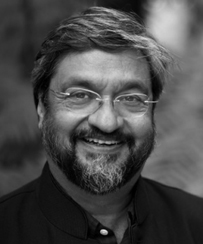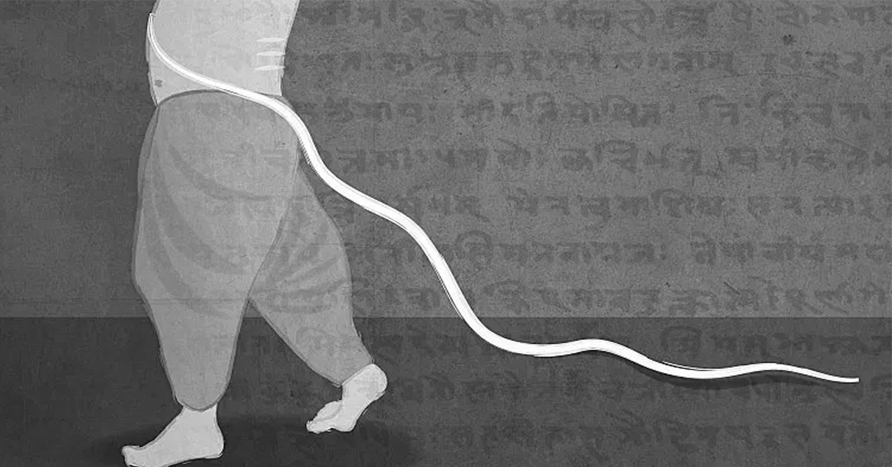
Rajeev Bhargava
Anyone who adheres to the principles of the Indian Constitution is automatically anti-Brahmanical
A few months ago, a chilling report appeared in Deccan Herald stating that in 2017, 210 cases of atrocities against Dalits occurred in the urban districts of Bengaluru and 106 in its rural districts. Likewise, Kerala reported 883 cases of such crimes between June 2016 and April 2017. Other reports said that there has been a 66 per cent growth in crimes against Dalits in the 10-year period of 2007-2017.
The horror of these statistics is made vivid when one examines concrete events. On April 12 this year, 200 people attacked a small group of Dalits for swimming in the Bhadra river in Karnataka. As they thrashed these people, the perpetrators screamed that the river belongs exclusively to the upper castes. Evidently, Article 15 of our Constitution is not worth the paper it is printed on. It remains toothless, impotent, ineffective.
What kind of thinking underlies these brutal attacks of social violence in which innocent folk are targeted merely because they belong to a particular caste? Since most atrocities revolve around the basic issues of land, wages and entitlements, poverty and powerlessness are viewed as the cause of such violence.
But such explanations do not go deep enough because they leave out the prime mover behind such atrocities — Brahmanism. This precisely was B.R. Ambedkar’s contention, who argued that without a robust movement against Brahmanism, Dalit emancipation is impossible. But then, we must ask what exactly is being opposed? What are the core features of Brahmanism?
Not ‘anti-Brahmin’
For a start, opposing ‘Brahmanism’ does not entail being ‘anti-Brahmin’. To do so would imply that all Brahmins are responsible for these atrocities. This is as preposterous as ascribing blame to all Muslims for any wrong committed in, say, the reign of Alauddin Khilji, or all British people for the Jallianwala Bagh massacre or, for that matter, all Hindus for the lynching of an innocent Muslim. We should not fall prey to this crude notion of collective responsibility. In a society which is driven by caste, a person may belong to the caste of Brahmins but not adhere to the core ethic of Brahmanism. He may even have morally disassociated himself from it. The resolution to burn the Manusmriti and thereby oppose Brahmanism was taken by Ambedkar jointly with G.S. Sahasrabuddhe, a chitpavan Brahmin.
Indeed, Ambedkar went even further. In a speech at the G.I.P. Railways Depressed Caste Workers’ Conference in 1938, he claimed that “when I say that Brahmanism is an enemy that must be dealt with, I do not mean the power, privilege or interests of Brahmins as a community”. On the face of it, this seems odd. For, what else could Brahmanism be except a defence of the power, privilege and interests of Brahmins as a community? In fact, this statement is not that perplexing.
Take an instance from our own history. The Rig Vedic society of 1500 BCE had a community of ritual specialists that transmitted its ritual related know-how from one generation to another. Others, the political rulers or ordinary householders, did not possess it. This group of Brahmins was granted some privilege on account of the knowledge it possessed. For satisfying the ‘religious’ needs of members of other communities, the group was even accorded respect not owed to others.
This produced an inequality but the resulting hierarchy was fluid, contingent and reversible. This contingently generated superiority of Brahmins was not systemic or integral to the structure of society, and therefore not necessarily demeaning to others. This sacrifice-centred Vedic Brahmanism is not to be conflated with the Brahmanism Ambedkar despised and wished to destroy. One should refuse to conflate the privilege of such ritual-performing Brahmins with Brahmanism.
A deeply conservative ideology
What then is Brahmanism? It is a sociopolitical ideology that encodes a memory of an ideal past and a vision of society in the future, one in which Brahmins occupy the highest place not only as exclusive guardians of a higher, spiritual realm but also as sole providers of wisdom on virtually every practical issue of this world. They possess superior knowledge of what a well-ordered society is and how a good state must be run. More importantly, their superior position in society and their superior knowledge stems from birth. This makes them naturally, intrinsically superior to all other humans, so superior that they form a separate species (jati) altogether. Nothing can challenge or alter this fact. No one becomes a Brahmin, but is born so.
A person’s acts may determine the position he occupies in the next life, but not in this one. Of course, this is true not only of Brahmins but of every other jati. The position of each jati is unalterably fixed at birth. The athi-shudra, the ‘untouchable’, is born into and therefore must occupy the lowest, most inferior rank; no action of his can alter this fact. This sociopolitical ideology makes hierarchy necessary, rigid and irreversible.
The hierarchical social order, it follows, corresponds to the natural order of things. No one can exchange his position with that of another, or move up or down. Any attempt to do so is morally wrong. Dalits, according to this view, must remain in ‘their place’ and if they try to move up, they must be put down.
Brahmanism then is the most perfect form of conservatism, a status quoist ideology par excellence, entirely suitable to elites who wish to perpetuate their social status, power and privilege. Paradoxically, this is the also the reason why it spread everywhere in India and beyond and why it endures: regardless of your religio-philosphical world view, if you are a privileged elite, you would find this ideology irresistible.
So, there can be Brahmanical Buddhists or Jains. And those who convert to, say, Islam or Christianity may still continue to embrace this sociopolitical ideology. Many Muslims and Christians, for all practical purposes, are Brahmins or Thakurs who continue to inferiorise Muslim or Christian Dalits.
Brahmanism naturalises existing power, privilege and higher status. The kings love it, the wealthy merchants and landlords are happy with it. Indeed, because it gives them power over athi-shudras, even the high-placed shudras in this system of graded inequality are willing to acquiesce to it. In short, everyone at the top finds it appealing because everyone below is required to carry out the task as dictated by his current social position and to not ask for more. Anyone who consents to, endorses or justifies this hierarchical order, regardless of his caste, creed or gender, is then a ‘Brahmanist’.
Because this ideology is fundamentally against any kind of social mobility, it restricts individual freedom; because it is totally enamoured of hierarchy, it is ineluctably inegalitarian; and because it separates one group of human beings from another, it is deeply incompatible with any idea of fraternity. No wonder Ambedkar defined Brahmanism as the negation of the spirit of liberty, equality and fraternity. This makes Brahmanism and the Indian Constitution fundamentally opposed to one another. Anyone who sincerely adheres to the core principles of the Indian Constitution is automatically anti-Brahmanical. And one committed to Brahmanism disabled from embracing the values enshrined in the Indian Constitution.
Source: ‘The Hindu’
Communal Voice of a Sitting HC Judge Staking the Supremacy of Brahmins!
A sitting judge of the Kerala High Court, recently made some rather controversial remarks about Brahmins and their virtues. In the course of his speech, the judge also called on the Brahmin community to agitate against caste-based reservation.
At the Tamil Brahmin’s Global Meet held at Thiruvananthapuram, Kerala, the judge began his address by extolling the virtues of Brahmins.
“Now who is a brahmin? A brahmin is dwijhanmana – twice born… Because of poorva janma suhridham, he is twice born.
He has got certain distinct characteristics: clean habits, lofty thinking, sterling character, mostly a vegetarian, a lover of Carnatic music. All good qualities rolled into one is a brahmin.”
The judge proceeds to opine about the rich heritage of agraharams (temple land given to Brahmins), remarking that the areas around such land should not be allotted for flat construction,
“There are innumerable agraharams in Kerala, which needs to be preserved. There is a rich cultural heritage. The agraharams have to be declared as heritage source and we shall not permit any flat to be built in between the agraharams – in between the houses in the agraharams.”
Justice’s speech then moves towards more controversial ground as he calls on the Brahmin community to agitate for economic reservation, rather than caste or communal reservation. All the while, he maintains that he is not expressing any opinion on the same considering the fact that he is holding a Constitutional post.
“It is time for you to deliberate as to whether reservation should be on the basis of community or caste alone. Occupying a constitutional post, it may not be proper for me to express any opinion – I am not expressing my opinion at all. But I am only kindling your interest or reminding you that there is a platform for you to agitate or to voice your concern about economic reservation alone, and not caste or communal reservation.
Of course, there is a 10 per cent reservation for economically backward classes. A son of a Brahmin cook, even if he falls within the non-creamy layer zone, will not get any reservation. Whereas, a son of a timber merchant who belongs to other backward communities will get reservation if he is within the non-creamy layer zone. I am not expressing any opinion at all, it is for you to deliberate and put forward your opinion.”
As he concludes his address, the Justice appears to opine that the Brahmin community is not vocal enough in pressing for its demands.
“As Mr. Raman said, karayunna kuttike paal ullu (‘only the crying child will get milk’). The time has come for us to play an orchestra and not to play solo. More of Veda Padashaalas which are now dwindling should be encouraged. The rich cultural heritage should be protected.”
Further, he remarks that persons with the qualities of a Brahmin should always be at the helm of affairs.
“It may be noted that a Brahmin is never communal, he is always considerate, he is an ahimsa vadi (proponent of peace). He loves people, he is one who liberally donates for any laudable cause. Such a person should always be at the helm of affairs for which this Tamil Brahmin meet will definitely be a turning point.”
A brief about the judge who raised the communal voice: The Hon’ble is Justice Thiru. Chitambaresh is an alumnus of Government Law College, Thiruvananthapuram. He started his practice in 1981. He was designated Senior Advocate in November 2007. In November 2011, he was sworn-in as an Additional Judge of the Kerala High Court. In December 2012, he was made permanent judge.
How cunningly the support, solidarity rendering and staking claim by brahmins have been instigated by a person who is holding Constitutional post? Can the law be silent, since the utterances emanate from the person at the helm of affairs in judiciary, who has to pronounce his judgement on many cases connected communal issues?
Can he be exempted from the disciplinary proceedings? Is he immune from such action as exempted during the reign of Manudharma? Still Manu dharma reigns the rule stressing the subjugation of vast majority of toiling masses of this ancient land?





